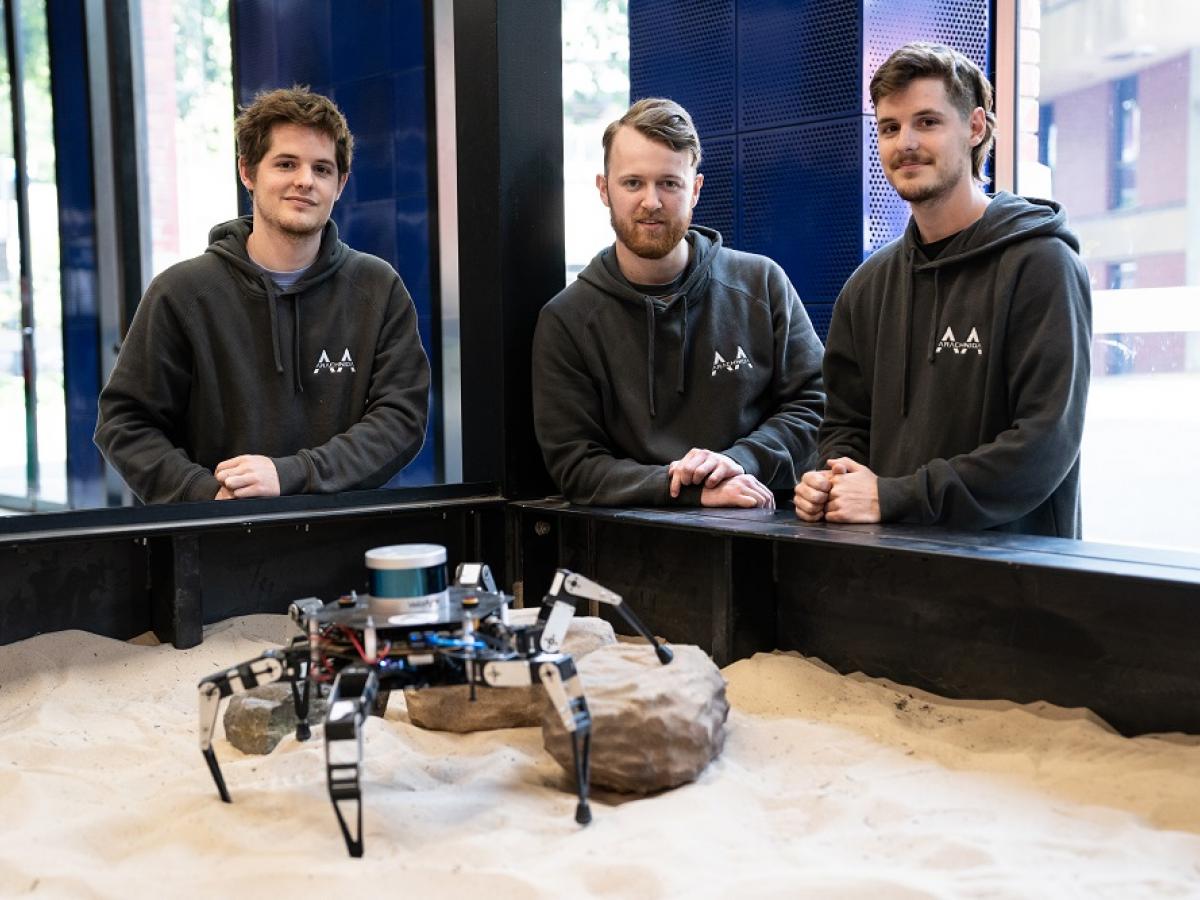Future-focused students create STEM-based solutions
University of Adelaide students are showing their final year projects at Ingenuity, including the latest version of a cave exploring robot that resembles a spider, improvements to how a NASA robot works and 3D printing to fool facial recognition systems.

Tyler Groome, Luka Moran and Riley Groome
Held at the Adelaide Convention Centre on Wednesday 1 November, Ingenuity 2023 is a platform for students to professionally present their work to a wide range of audiences including industry and government representatives.
Ingenuity 2023 highlights the efforts of 445 honours and higher degree students from across the University’s Faculty of Sciences, Engineering and Technology. On display are nearly 200 examples of how students are re-imagining current and future challenges.
“Ingenuity is an opportunity for University of Adelaide STEM students to show how they tackle real-world challenges with ingenious solutions. It is a playground for problem-solvers and progressive thinkers,” said the University of Adelaide’s Professor Katrina Falkner, Executive Dean of the Faculty of Sciences, Engineering and Technology.
Ingenuity is attended by several thousand people each year: primary and high school students, industry representatives, university staff and students, and the general public.
“The projects on display include a wide range of innovations including ways to sustain and enhance life in our built and natural environments and in space; improve renewable energy generation and push the boundaries of what is possible in robotics,” said Professor Falkner.
Students Luka Moran, Riley Groome and Tyler Groome have developed the latest iteration of a cave exploring robot. They have perfected the spider-like robot’s movement so that its body and its laser remain horizontal while walking up slopes, can determine its own location as it moves, and it can change the way it walks so that it moves as efficiently as possible on difficult terrain and avoids obstacles.
Isabella Baldino, Eleanor Fixter and Emma Dunthorne’s project aims to address the problem of hand injuries in cricket by assessing the effectiveness of three distinct designs of batting gloves that replicate hand positions in a match-based cricket scenario.
Another team of students are working on perfecting a NASA robot design. Costi Marangos, Joah Nenke, Oli John, Hayden Krueger and Nicholas Mosca are working on a version of NASA’s RASSOR robot that was open for use in research and eEducation (the RE-RASSOR robot). This robot is designed to be inexpensive, and open source, with all of it either 3D printed, or parts that are available inexpensively online. NASA could send it to the moon to extract resources to support future human habitation.
Other projects on display include:
- Improving the stability of ocean platforms in order to guarantee stable power production from off-shore wind turbines;
- Generating fresh water using waste heat to provide a better supply in the aftermath of natural disasters;
- Using advanced technologies and tools to improve mRNA vaccine formulation to enhance vaccine stability; and
- Developing an infrastructure-less visual information communication network between a team of robots that could be used in fighting fires more effectively.
Attendees at Ingenuity 2023 have the opportunity to engage with university students, share in their experiences, and learn more about studying STEM at the University of Adelaide.
More information about Ingenuity 2022 is available at: www.set.adelaide.edu.au/ingenuity/
Media contacts
Crispin Savage, Manager, Media and News, The University of Adelaide. Mobile: +61 (0)481 912 465.
Email: crispin.savage@adelaide.edu.au
